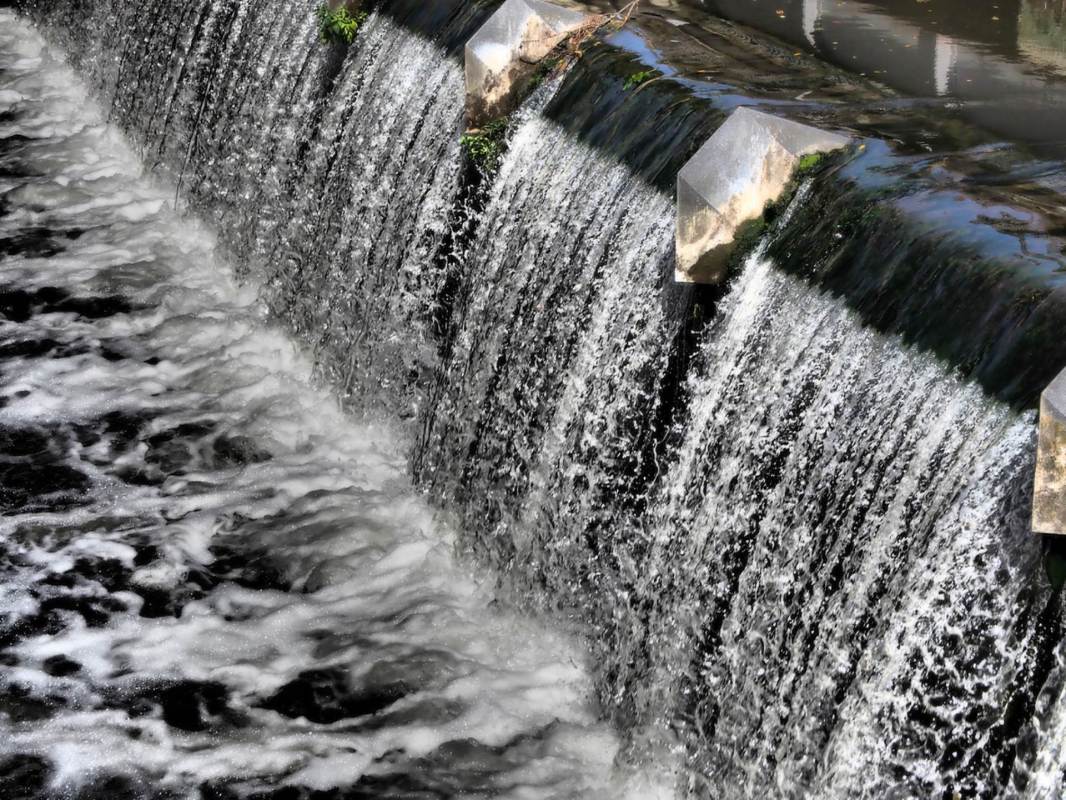A handful of projects earned plaudits as nominees for the first Dam Removal Europe Award. Only one took home the prizes.
The ultimate honors, given in May 2022 for projects from 2021, were bestowed upon Finland's South Karelian Foundation for Recreation Areas, which removed the 96-year-old Kangaskoski Dam on the Hiitolanjoki River — home to the country's "last remaining stock of original and fully natural landlocked salmon," according to the Regional Council of South Karelia.
At the seventh Dam Removal Europe seminar in Lisbon, Portugal, the European Investment Bank gave €10,000 (around $11,000) to the Finns — who also took home the Happy Fish statue — to be used for a future project.
"By shining a spotlight on successful initiatives to remove obsolete barriers in Europe's rivers, the Dam Removal Europe Award aims to help stimulate similar initiatives across Europe and contribute to a better understanding of successful strategies for scaling up the removal of obsolete barriers," a pair of EIB officers wrote.
In Europe, there are more than a million barriers to free-flowing rivers, and migratory fish have declined more than 90% since 1970, according to the EIB. The European Commission Biodiversity Strategy for 2030 wants to remove obsolete barriers and others like them to open at least 25,000 kilometers (15,534 miles) of rivers by the end of this decade.
In 2021, about 240 barriers were removed in Europe, per the EIB. Spain (108) nearly tripled runner-up Sweden (40), while France (39), Finland (16), the U.K. (10), and Estonia (seven) were the other countries with more than three removals. The other projects shortlisted for the award were the removals of the Fersinghem Dam and Dalloz Dam in France, Galtzaraberri Dam in Spain, and South Tyne Weir in the U.K.
The South Karelian project opened about 2.5 miles of river by taking away a 13-foot-high, 32-foot-wide dam, the first of three hydropower dams removed to benefit endangered migratory fish and restore an ecosystem "lost for a century," the EIB reported.
The other dams have since been felled, and salmon from Russia's Lake Ladoga can now spawn in areas they had been unable to reach. The project took decades to be realized but is now benefiting locals as well as the fish, spurring tourism. In September, there were 220 salmon per acre at the site — a second consecutive record density figure.
"Freeing rivers and their floodplains allows them to re-establish as natural water buffers, generating benefits for society, such as building resilience to the impacts of climate change, flood and drought mitigation, water purification and recreational opportunities," the EIB stated. "The removal of obsolete barriers is an affordable, proven measure to bring life back to rivers and build resilience, helping to address both the climate and environmental crises."
Join our free newsletter for cool news and cool tips that make it easy to help yourself while helping the planet.









